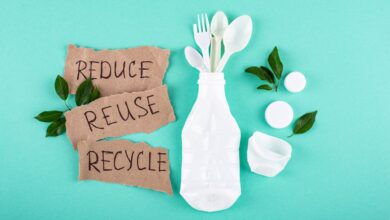
New figures released by CommBank Household Spending Intentions Index show lockdown-freed Australians spent an estimated $260 billion in December with travel, transport and retail the big winners.
But while the amount represents the highest spending level for over two years, the advent of Omicron has seen January spending fall.
The CommBank figures show an increase of 2.5 percent to 115.0 in December, its highest level since the series commenced in July 2017.
The index, which provides an in-depth gauge of Australian consumer spending, shows strong Christmas trading was boosted by the lifting of Delta restrictions, with accumulated household savings during COVID, estimated at $260 billion at the end of December 2021 by Commonwealth Bank of Australia (CBA) economists, also powering the surge.
Travel spending intentions rose 28.1 percent during December as a result of the reopening of state borders and an upswing in summer holiday spend.
But while travel related spending was up 20.9 percent from December 2020, it remains lower than December 2019.
Hotels, motels and resorts, travel agents, tourist attractions, trailer parks and campgrounds and trailer dealer categories all saw increases, but airline spending remained weak.
Transport spending intentions jumped 11.8 percent in the month, with higher petrol prices a key factor as spending at service stations continued to lift, along with spending on taxi services, tolls, car washes and trailer rentals.
That said, transport spending intentions are still below pre-COVID levels, with public transport spending still weak due to the shift to working from home.
Retail spending intentions rose 10.8 percent in December and are 2.8 percent higher than December 2020, driven by increases in spending on speciality retail stores, department stores, clothing stores, electronic stores, jewellery and watch stores and hardware stores. Spending at liquor stores fell as consumers continued to shift to eating and drinking outside the home.
CBA senior economist Belinda Allen said the household spending data for December showed a sustained recovery from the Delta lockdowns, although increased numbers of people isolating due to the Omicron virus has been impacting spending levels in January.
“December is generally a seasonally strong time for retail due to Christmas shopping. However, this was compounded by the fact that this year was the end of restrictions post Delta and there was accumulated household savings, which led to a strong surge in spending,” Ms Allen said.
“The boost in the travel and transport sectors also reflect increased mobility around the country in December. Domestic tourism (such as driving holidays are lifting spend, while we continue to see reduced air travel due to availability. This is flowing through to higher spending in other related sectors.”
However, the Omicron variant, she said, which has led to a surge in COVID cases late in December and into January, was an important development to watch.
“It is impacting the demand and supply side of the Australian economy. We can see from our high frequency credit and debit card data there does appear to be a fall in spending in January, with spending on services more impacted than goods spending.”
CBA economist Stephen Wu noted that consumer spending had already dropped by around 3 percent over January as a result of the latest spike in COVID cases.
“It is important to note that there is always a high degree of volatility around spending over the Christmas and New Year period,” he said.
“But our assessment at this stage, based on our internal data, is that the surge in COVID cases over the past three weeks has resulted in around 3 percent less spending over the period than would otherwise have been the case.
“This is not a bad result considering the huge number of people that have been required to stay at home.
“With a large number of people in isolation we have seen spending on services slow sharply. However, spending on goods spending has held up well. Online spending growth remains firm, while in store spending is a little lower.
“Unsurprisingly, spending on transport and recreation has slowed in recent weeks. Spending on alcohol consumed outside the home has also fallen, although spending on eating out has been broadly steady.
“Given the number of COVID cases, spending on medical and healthcare has been strong over recent weeks. This category includes spending in pharmacies. Purchases of rapid antigen tests, pain relief and other supplies to help with the virus is likely supporting spending in this category.”
The CommBank HSI Index combines analysis of CBA payments data (the largest consumer spending data set in Australia covering 2½ million households and approximately 40 percent of payment transactions), loan application information and Google Trends publicly available search activity to provide a unique and powerful monthly insights into current and future spending trends. Access the January report via www.commbank.com.au/hsi
Mike Parker-Brown is a UK-trained and qualified journalist and an award-winning travel communicator with more than 30 years experience.
Since 2002, Mike has worked as a freelance writer and PR consultant providing his services to major organisations in Australia and internationally in the tourism, aviation, hospitality, recruitment and export marketing sectors.







